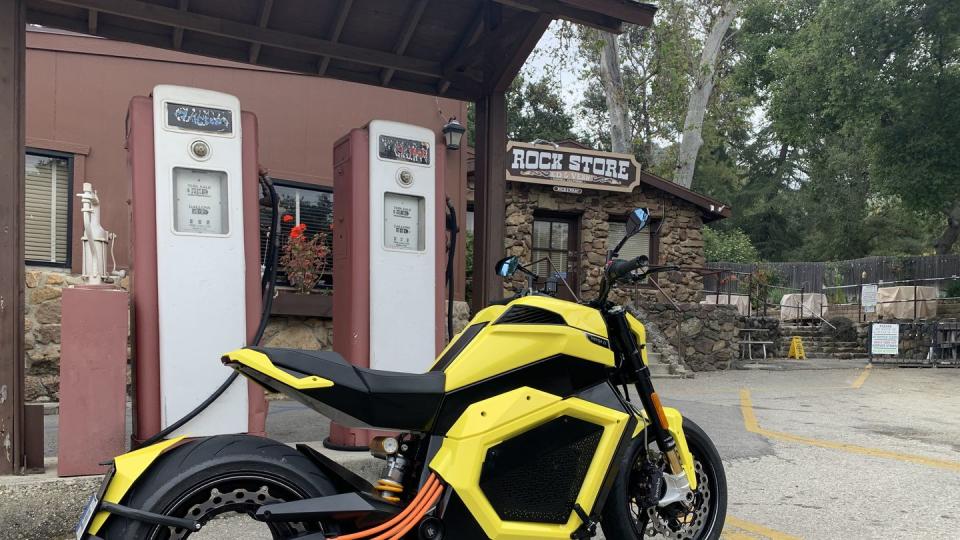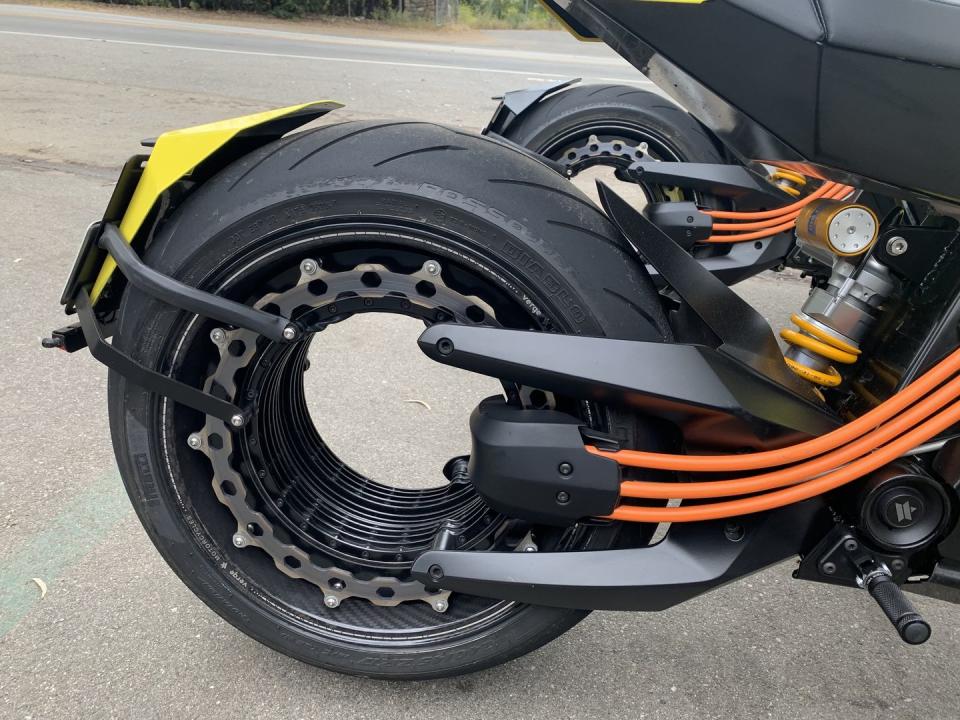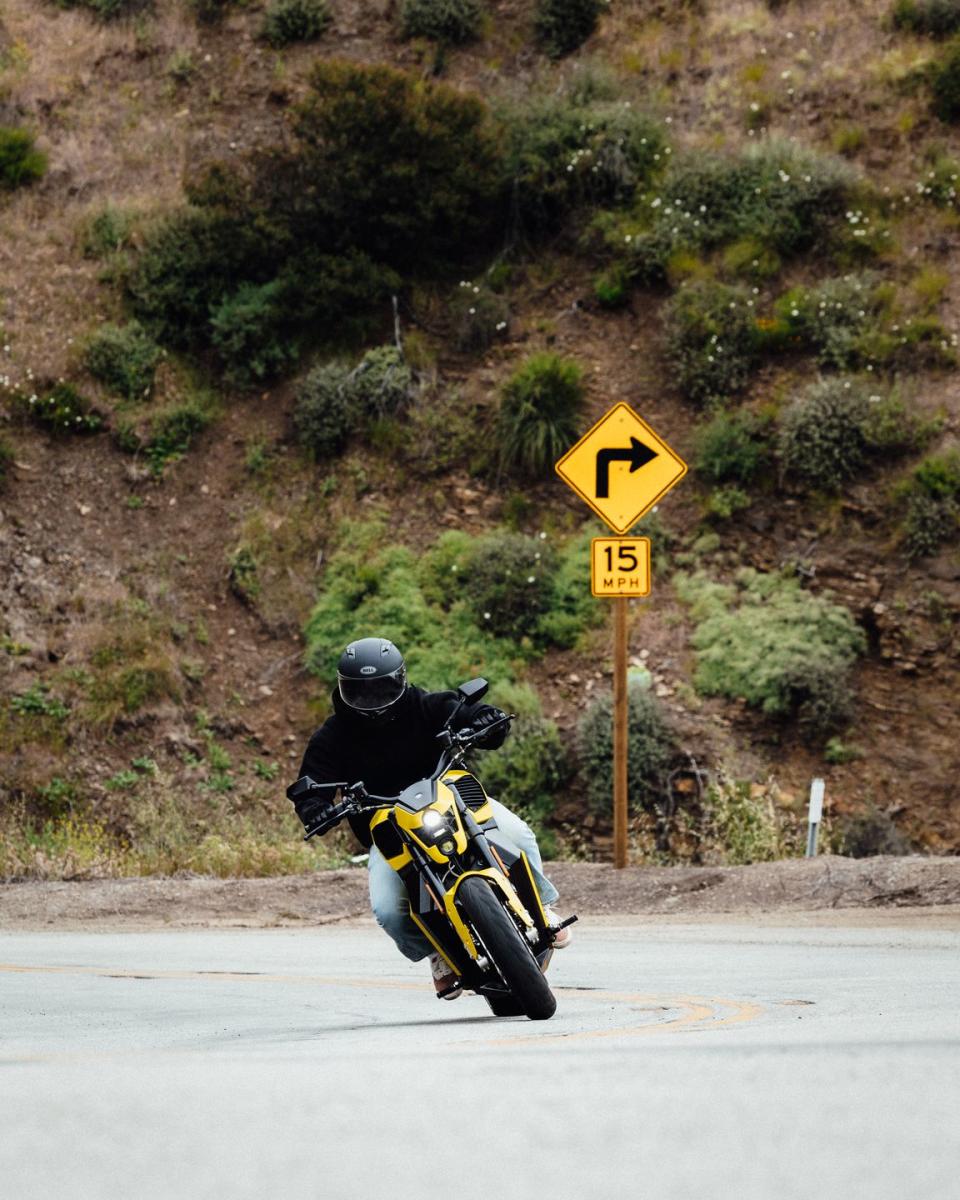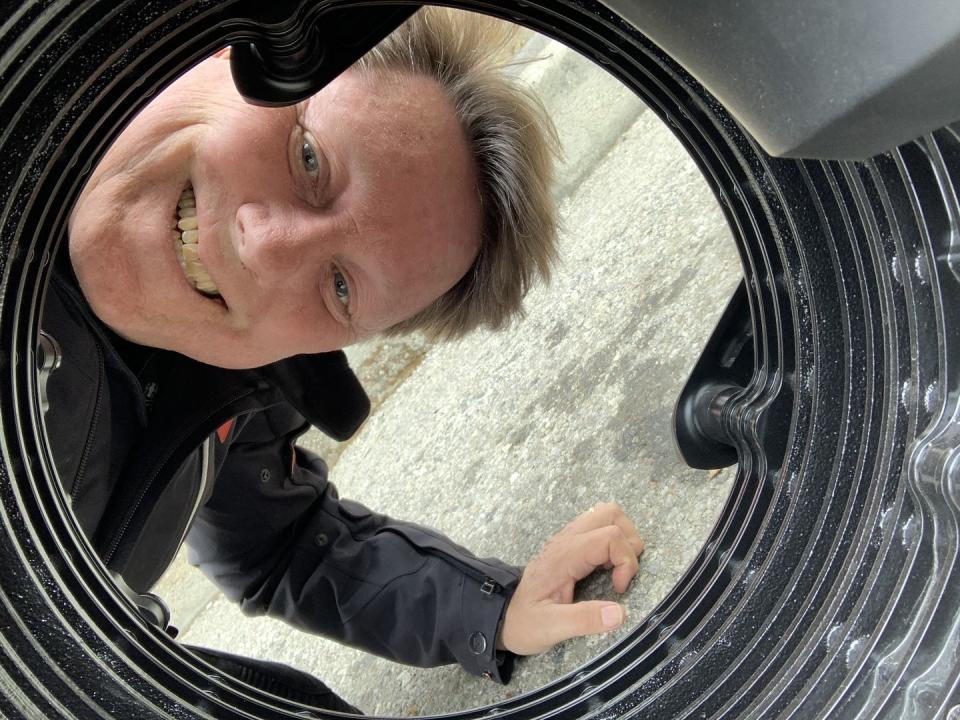Verge Electric TS Pro Is a Truly Revolutionary Motorcycle

The Verge electric motorcycle combines the relative newness of electric power with the revolutionary hubless electric motor rear wheel.
Horsepower is 137, but torque is (OMG) 738 lb-ft! A new model called the TS Ultra will make 201 hp and 885 lb-ft of torque.
Deliveries could start as early as the end of the year. Starting price is $30,000 for the TS Pro and $45,000 for the TS Ultra.
Internal combustion, electric drive, cars, motorcycles, have all gone along pretty much unchanged since Gottleib Daimler first spun the flywheel on his first automobile and took off down the road from Cannstatt, Germany.
Until now.
The Verge electric motorcycle is revolutionary - in a couple ways. First, it’s electric. Yes, there are other electric motorcycles: Zero, Energica, Ryvid, heck, even Harley-Davidson makes the Livewire and S2 Mulholland. Yet, electricity powering a motorcycle is still new enough and novel enough to warrant attention.
But then consider electric motorcycle maker Verge, from sunny Espoo, Finland. Verge takes the electric motorcycle and turns it, not upside down but inside out. The heart of its innovation is the electric motor… in the rear wheel. Not really in the rear wheel, it is the rear wheel.

“So all the motorcycles have had, in the last 100 or 120 years, the same architecture, right?” asked Pekka Parnanen, Verge’s chief operating officer. “You have the motor in the bottom, and then you have the power source, that being gas or batteries, on top.”
The problem with that, Parnanen says, is when it comes to electric motorcycles, if you have the motor in the bottom, you don't have much room for the batteries.
“And you have two heat sources next to each other, and you have less battery, so that affects the range, and all that kind of stuff.”
In such a setup you also need to have liquid cooling and pumps for the liquid and radiators “and things like that.” Not to mention that the center of gravity would be higher and would affect your low-speed cornering.

“You feel like you might be tipping over.”
So the Verge has its 20.8-kWh of batteries in the lower half of the frame, from about the bottom of what looks like the gas tank, south. That done, they had to figure out the motor. All other electric motorcycles put a motor inside the frame with a traditional chain or shaft drive. But that adds weight, cost, and complexity.
“We needed to figure out, ‘Where do we put the motor,’ and there's really only one place to put it, it's a back wheel.”
Not in the back wheel like a hub motor, but instead of the back wheel. Look closely, or not even that closely, and you’ll notice there are no spokes, no hub, nothing. The back “wheel” consists of a flat-cylinder-section-shaped stator wrapped in a slightly larger rotor.
“So the regular electromagnetic motor, if you think about it, the stationary part (the stator) is outside, and then you would have (the rotor) inside that turns. This is reversed. So the stationary part is inside and the rotary part is outside.”
Thus, there’s no cooling needed for the motor, no driveshaft, no chain, no room taken up inside the frame. It’s all lighter – at a claimed 450 pounds total curb weight – and more efficient.
How efficient? This motor makes 137 hp and 738 lb-ft of torque. That’s on the Verge TS Pro I rode and which you see here. A coming model called the Verge TS Ultra makes 201 hp and 885 lb ft of torque.
Sikasiisti! (Finnish for “Great jumpin’ catfish!”)

That power and torque goes directly into the motor to turn the wheel, and the torque can be controlled in milliseconds, Parnanen says.
When you're looking at that much power and torque you cannot really use a hub motor, Parnanen said. Also, a hub motor would be heavier.
“So what we have is a kind of reversed electromagnetic motor.”
You would be the smash hit of The Rock Store, or Newcomb’s, or Skyline Blvd., or The Dragon’s Den Grill by Tail of the Dragon, or wherever bikers gather. Me, I was near the Rock Store in Malibu, so that’s where I headed.
My yellow Verge TS Pro started by placing a credit card-sized piece of plastic near the tank-mounted screen and hitting a button. The bike came to life but didn’t make any noise. Remember, cooling fans only operate when the bike’s battery is plugged in and charging.
Lifting it off its kickstand, it didn’t feel too heavy, not like the top-heavy Energica Ego I rode a month or two ago with its batteries up high in the frame and an electric motor down low.
You have a choice of driving modes in the Verge ranging from Zen to Beast. I had it in Zen to start out. The suspension is manually adjustable but requires tools to adjust, and no one had any tools. Mine had been cranked down to what I took to calling the “harshest ride ever,” ostensibly because we’d be riding through tight twisities, but it could have been to control the unsprung weight. I'm no suspension engineer. As it was set up, every little tar strip crashed up through the suspension and made the ride semi-brutal. With fully adjustable front and rear suspension this could certainly be addressed.
Also, the handlebars were way too far forward, way too wide, and way too high up, possibly to look better in photos. “Normal” handlebars would have been better, or even some clip-ons. And the foot pegs were dang-near flimsy – beef those suckers up! But I looked cool. Maybe.
The torque delivery was, indeed, monstrous. Rear tire size on the 240/45ZR17 Pirelli Diablo Rosso II was necessary not only to accommodate the large motor but to accommodate the huge amount of torque. (Fronts are 120/70ZR17s.)
Zero-to 60 mph comes up in a claimed 3.5 seconds, and I believe that stat. To slow down there is regenerative braking and dual discs in front and a single disc clinging to the outside of the wheel/motor in the rear.
Into the tight twisties I turned, ready for Finnish fun.
The bike doesn’t feel like a sport bike, though my Finnish riding partner/monitor “Tomi” had been leaning the bike far into corners for days, judging by the wear on the outside of the Pirellis. On true sport bikes you instantly feel comfortable leaning into and powering out of corners, they encourage you to push your limits and approach those of the bike. This one, perhaps because of the harsh ride setup and the big, big rear tire, took some getting used to, more than I got used to in the hour or so I had the bike. It felt more like a sport tourer, or even a heavy-ish cruiser in the corners, even though it weighs less than most average motorcycles.
The Energica Ego+ weighs 573 pounds, for instance, but offers “only” 171 hp and 164 lb ft. The Harley-Davidson Livewire One is 562 pounds with 100 hp and 86 lb ft (the S2 Mulholland weighs only 432 pounds but has only 84 hp and 194 lb ft of torque). The rear motor never made any noise and never wiggled or wobbled. It stayed firmly in place and made torque, like it’s supposed to.
So there were some things I’d change, and certainly could if I could afford the $30,000 starting sticker of the Verge TS Pro. Yet, I still wanted this bike, and not just because it looked cool and was revolutionary. With a range of 217 miles and Level 3 charging capability, it’d be practical. I’d gladly accept a long-termer. Or the 201-hp and 885-lb ft Verge TS Ultra starting at $45,000. Either one’s fine. I’m even willing to learn Finnish.
Anna minulle moottoripyörä!

 Yahoo Autos
Yahoo Autos 